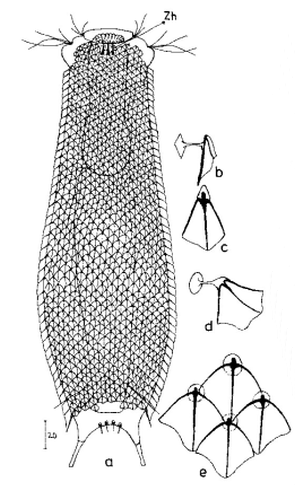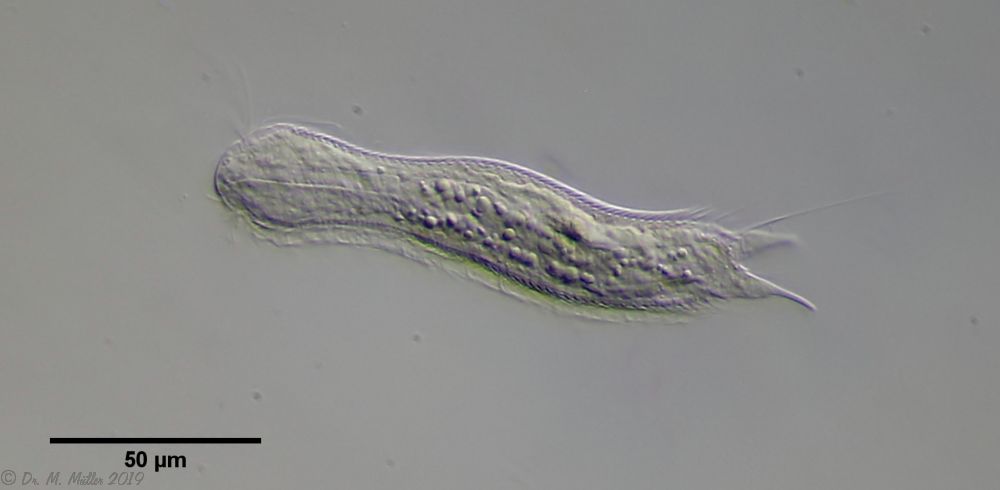Aspidiophorus longichaetus

150 µm
Width:
35 µm
Width of the head ( five-lobed ):
22 µm - 35 µm
µm
Length of the furca:
18 µm - 20 µm
Adhessive tubes (very thin tapered):
50% of furca
Pharyx ( cylindrical ):
36 µm
Diameter of the mouth ( around ):
5 µm
Dorsal scales:
13-14 rows of 24 petiole scales each; long, unkeeled, rhombic terminal plates (6-7µm); posterior 4 terminal plates 10µm, spine-tipped; petiole length 1.2µm; anal region: 3 simple, scaleless spines (18-20µm), protruding from toe; on base of toe, long pair of spines (39µm).
Ventral scales:
Ventral intercilliary field naked, 2 terminal scaleless spines (10µm).
Similar species:
A. ontarionensis : possibly synonym; longer caudal spines.
I have only found this species in the mud of a large pond. The long spines over the toes make this species unmistakable:

If you put the focus a little deeper, you can see the elongated end plates and the two smaller spines at the base of the toes:

In the median section, the scale cross sections can be easily assessed:

In the side view you can see the strong head shield (cephalion):
